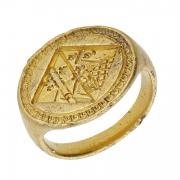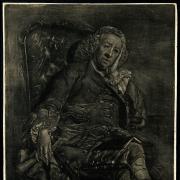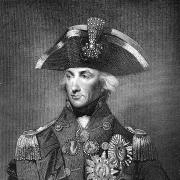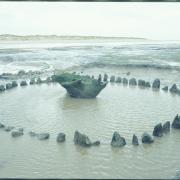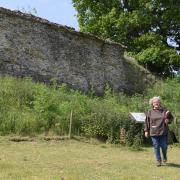As the calendar ticks towards Halloween, Stacia Briggs has a tale of aristocracy, drugs, death and vampires
It was the year without a summer when darkness fell over Europe, livestock died, famine raged and monsters were born. A year earlier in 1815, Indonesian volcano Mount Tambora had exploded, killing tens of thousands of people and sending ash particles into the stratosphere.
The following summer became a volcanic winter of hail, deadly frosts and storms, which persisted across Europe from May to August. It was bone-chillingly cold on Lake Geneva when Lord Byron, his physic John Polidori, Percy Bysshe Shelley and his lover – later wife – Mary Godwin and her step-sister Claire Clairmont, arrived for the summer.

Candles lit at midday and fires burning, Byron entertained guests by reading ghost stories out loud before suggesting everyone in the room should produce their own tale of terror. In the nights and days that followed, Frankenstein’s monster jolted into life and a new kind of vampire rose from the grave as Polidori took a fragment of an idea from Byron and created his own amoral fiend.
Within just two years, it would be Polidori himself brought back from the dead after a terrible accident in a Norfolk country park.
But first, more of the man who unleashed vampires on the world.
John William Polidori, born in 1795, came from a long line of physicians, poets and translators and was the oldest son of Gaetano and Anna, an English governess.
His father translated literary works including Milton’s Paradise Lost and had his own press which later published poems by his grandchildren, Dante Gabriel and Christina Rossetti. John was a bright boy, won a place at the University of Edinburgh to study medicine and, after writing a thesis on sleepwalking, qualified as a doctor on August 1 1815, aged just 19.

Seven years too young to practice medicine, John found himself unemployed and with time on his hands to spend time in the orbit of literature, his true love. A star-struck Polidori was drawn to mad, bad and dangerous to know Lord Byron, who made him a tempting offer: a role as his private physician, accompanying him on a tour of Europe.
Further enticement came from Byron’s publisher, who offered to pay Polidori to keep a diary of their travels. For his part, Byron told friends Polidori was “irresistible”.
The 28-year-old poet and peer had raging gonorrhoea and syphilis, a deformed foot which caused him constant pain, an eating disorder, issues with alcohol and a love for laudanum: no wonder a doctor, a good-looking one to boot, was such a travel essential.
John’s father was nervous: he had previously been employed by Italian dramatist Count Vittorio Alfieri and was well aware of how difficult it was to work for someone well-known.
And Lord Byron was very well-known.
As famous for his scandal as for writing, by the time Byron met Polidori, Regency London was under the spell of what his wife Annabelle Milbanke called ‘Byromania’. The rakish Lord had enjoyed not-so-clandestine affairs with men and women and was fleeing Britain, a failed marriage, alleged incest rumours, scandal and rising debt.

Byron rented a mansion near Lake Geneva in Switzerland, where he and Polodori were met by Claire, Mary and Percy, who had rented a cottage nearby. It was a feverish, electric atmosphere exacerbated by thunderstorms, and just days after the ghost-writing challenge, Byron and Polidori’s relationship was a shadow of what it had been: desperate to impress, Polidori irritated his employer who mocked him openly.
Out of his depth in the company of writing Titans, Polidori remarked that next to Byron, he was like “a star in the halo of the moon. Invisible.”
Only Mary and Polidori stuck to Byron’s writing task – the former’s writer’s block dramatically shifting when she alit upon the idea of a scientist reanimating a creature made from stitched-together body parts in a laboratory.
Conversations attributed to a distinctly non-scientific Byron by Mary were, biographers Andrew and Suzanne Evans believe, actually with Polidori, a man of medicine.
In His Master’s Reflection: Travels with John Polidori, Lord Byron’s Doctor and Author of The Vampyre, they write: “Mary’s introduction [in Frankenstein] also mentions Erasmus Darwin who witnessed the reanimation of a worm in a glass case, as well as the experiments of the Bolognese medic, Luigi Galvani, who had been making frogs’ legs twitch with an electrical current. These are not topics that Byron could have spoken on with any authority, whereas Polidori…”
It is of no surprise that Polidori’s tale involves an innocent victim feeling as if their very life force is being drained away by someone, or something, more powerful than them. Indeed, the brave, young, handsome hero of Polidori’s novella realises that the vampire, Lord Ruthven, ruins everyone that he initially charms and seduces.

In The Vampyre, Polidori reimagined the mud-caked corpses rising from graves from Eastern mythology to create a romantic vision of vampires that inspired countless others to bring their own monsters into the world, such as Bram Stoker’s Dracula and Stephenie Meyer’s Twilight novels.
It doesn’t take a genius to read between Polidori’s lines: this is what happens when your hero nicknames you Polly Dolly, belittles you publicly or ignores you entirely. By September 15, the relationship between Byron and his doctor had disintegrated, with Polidori writing: “LB determined on our parting, - not upon any quarrel, but on account of our not suiting.”
Polidori travelled on to Switzerland and Italy, catching up with Byron in April 1817 (who had been rubbishing the doctor’s literary attempts behind his back), before returning home to London and his parents’ house.
Irritated that his son had not heeded his warning in regard to Byron, Gaetano wrote to contacts in Norwich and suggested John move to the city ahead of taking up a medical position. He moved into lodgings close to Norwich Market. Polidori quickly became a member of the Philosophical Society and, by virtue of his connections with Byron, was popular in Norwich’s literary circle and with young ladies.
He set up a dispensary treating the poor and reacquainted with former mentor William Taylor, a well-known philanthropic literary figure, who introduced him to polite society, including the Martineau family, with whom he spent much time.

Polidori also stayed with Lady Jerningham and her husband Sir George at Costessey Hall, then a fairytale-like manor with turrets and towering chimneys and it was here the final chapter of his life began. As he drove his gig through the hall’s grounds, he lost control and was thrown from the seat, sustaining a serious head injury.
It is unknown how long he lay unconscious but by the time he was found, he was close to death - a Catholic, he was given the last rites, and his family were informed.
Nursed by Lady Jerningham and her staff, Polidori did pull through, but he was forever changed or, as Harriet Martineau said, harshly: “If he had happily died then, he would have remained a hero in our imagination. The few following years disabused everybody of all expectations good from him.”
Still with his own medical dispensary in Norwich, Polidori struggled with his speech and memory, but was still able to write: as essay about pleasure, a book of poetry and another supernatural novel. Then he was hit with the biggest disappointment of his life.
On April Fool’s Day 1819, in The New Monthly Magazine, The Vampyre was published: under Lord Byron’s byline. Worse was to come: the magazine passed the story to publishers Sherwood, Neely and Jones and the next day, a hardback edition was released.

Polidori, who by this time was flirting with a career in the law, threatened the publishers with an injunction: how had a manuscript left with friends in Switzerland found its way to a London publisher, he wondered?
Furious, Polidori acknowledged his tale had its genesis in the fireside stories in Geneva, but told the editor: “…though the groundwork is certainly Lord Byron’s, its development is mine.”
But it was too late, Polidori’s claim to one of the world’s greatest monsters had evaporated like a vampire under a shower of Holy water, despite Byron’s catty comment that he had “…a personal dislike of vampires.”
John scuttled back to London where his legal training was fitful and unsuccessful and where he quickly accrued eye-watering gambling debts.
A broken man who was suffering the after-effects of a brain trauma which sent him towards dangerous self-medication, Polidori felt like a failed medic and author, his flirtations with careers in the priesthood and law had come to nothing, he was penniless and directionless.
In August 1821, John Polidori died in his family home after overdosing with a self-prescribed dose of prussic acid – although his family was said to assume his death was suicide, an inquest found that he had “died by the visitation of God”. He was 25.
Despite his untimely death, John Polidori has achieved immortality, of sorts: each time his very particular breed of vampire – aristocratic, glamorous, charming and amoral – is on the page or screen, he rises again, an echo of a sun-less summer’s night, when monsters were born.
And like any good story, there remains a twist in the tale.
After his death, Polidori was buried in the old St Pancras churchyard but, years later, new railway building work required his coffin to be dug up and moved: much like a certain Count from Transylvania…





